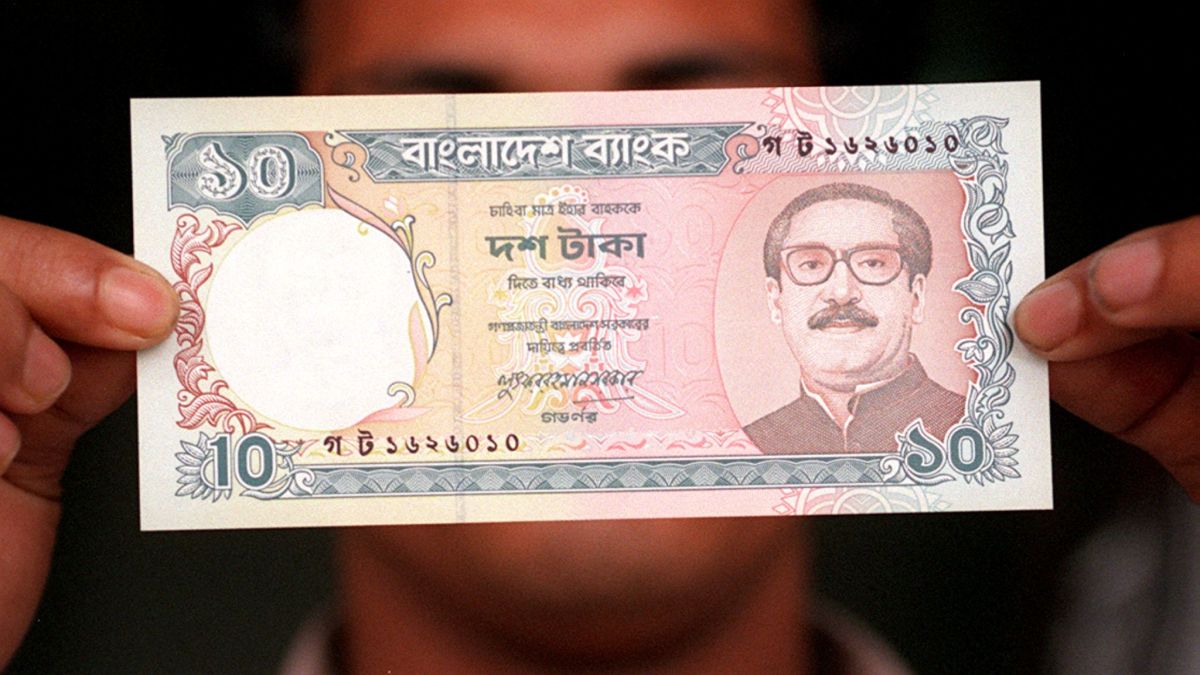He is known as Bangabandhu (friend of Bangladesh), but it seems these days Sheikh Mujibur Rahman has become an enemy of Bangladesh. In its latest move, the interim government of Bangladesh, headed by Nobel laureate Mohammad Yunus, is set to remove Mujibur Rahman, father of Sheikh Hasina and the iconic figure behind the founding of the country, from its currency notes.
This is the latest attempt of the interim government to remove signs of Rahman’s legacy from the country. Earlier, the government removed portraits of the founding father from the official residence and workplace of the president, as well as toppled his statue at Bijoy Sarani in the heart of Dhaka.
Here’s all that we know about this.
Removing Rahman’s face from currency notes
On Thursday (December 5), news emerged that Bangladesh was printing new currency notes. These new notes, the Dhaka Tribune reported, would not feature the image of Sheikh Mujibur Rahman. Instead, the new notes will feature religious structures, Bengali traditions, and graffiti drawn during the July uprising — the same protests that eventually led to Sheikh Hasina’s ouster.
The new notes are expected to be released in the market soon. Bangladesh Bank spokesperson and executive director Husneara Shikha was quoted as telling Dhaka Tribune, “I hope the new notes could be released in the market within the next six months.”
According to them, initially, the new designs will feature on the banknotes of Taka 20, 100, 500, and 1,000. They added that banknotes would be redesigned in phases.
The new notes come after the Finance Institute Division, Ministry of Finance wrote to Bangladesh’s central bank in September asking them to submit a design for new currency notes.
Historically, this is a huge step for Bangladesh as he has been part of the currency notes — the taka — since its inception on March 4, 1972. Historical records show that the note of one Taka was first introduced having a map of Bangladesh. Subsequently, on May 2, 1972, a note of 10-Taka denomination was introduced inscribed with the portrait of Father of the Nation Sheikh Mujibur Rahman.
It was in 1975 — the year Rahman and his family were murdered — that he was removed from the currency notes as well. Reports say that in 1976 when a completely new series of notes was introduced, they did not have any image of Sheikh Mujibur Rahman. Instead, they had Tara Mosque of Dhaka on the front side, and on the back, it bore the previously used scenes and images.
However, by 1998, Rahman made a return to the Taka notes and since then been inscribed on them.
Rahman’s portraits removed
The removal of Mujibur Rahman’s image from currency notes is part of a broader effort to reshape the country’s identity and step away from the legacy of Bangabandhu.
To achieve this, in early November, the Bangladesh interim government announced the removal of Rahman’s portrait from the official residence and workplace of the president.
Mahfuz Alam, an ‘adviser’ to the government, confirmed the same on Facebook, “Photo of Sheikh Mujibur Rahman- Post ‘71 Fascist, is removed from Darbar Hall. It is a shame for us that we couldn’t remove his picture from Bangabhaban after the 5th August. Apologies. But, he won’t be seen anywhere till people’s July spirit lives on,” Alam wrote as per Daily Bangladesh.
This, however, is a contravention of Bangladesh’s constitution, which states that the portrait of Mujibur shall be preserved and displayed at all government institutions and related bodies such as at offices of the President, the Prime Minister, the Speaker and the Chief Justice and in head and branch offices of all government and semi-government offices, autonomous bodies, statutory public authorities, government and non-government educational institutions, embassies, and missions.
Destroying signs of Rahman’s legacy
In recent months, there’s been a lot of anger against Mujibur Rahman and his daughter, Sheikh Hasina — who was forced to resign in the face of protests and flee the country.
This anger against Bangabandhu was visible when protesters toppled a statue in his honour on August 5. Visuals were broadcast around the world of anti-government protesters climbing atop the towering statue at Bijoy Sarani in the heart of Dhaka and pulling it down.
Murals and paintings on the wall bearing his face and slogans of ‘Bangabandhu’ were also defaced by the demonstrators. In fact, a mosaic panel depicting Rahman located on the front side of the building of the famous Teacher Student Centre (TSC) in the Dhaka University area was also destroyed.
Rahman’s statue and nameplate at the main gate of Comilla University were also vandalised. Reports say that a mob placed a necklace of shoes around the sculpture’s neck, and a rope was hung as a noose.
His house, on Road 32 in Dhanmondi, was also not spared. Angry mobs set the place on fire after looting and vandalising it.
The interim government has renamed several institutions which were named after Rahman and Hasina. One news report says that at least 14 hospitals have been renamed in Bangladesh. For instance, Bangabandhu Sheikh Mujib Medical College Hospital in Faridpur is now Faridpur Medical College Hospital.
Additionally, the interim government also cancelled a national holiday on August 15 that marks the assassination of Sheikh Mujibur Rahman
For many, this anger against Rahman is justifiable. However, some disagree. College student Alif Hossain is one of the few that feel that vandalising Mujibur’s statue was a step too far. “It was just wrong. He fought for the liberation of our country, he is the Father of the Nation, our Bangabandhu, how could he be so disgraced in the fit of anger,” the Dhaka-based student was quoted as saying to PTI.
With inputs from agencies
)